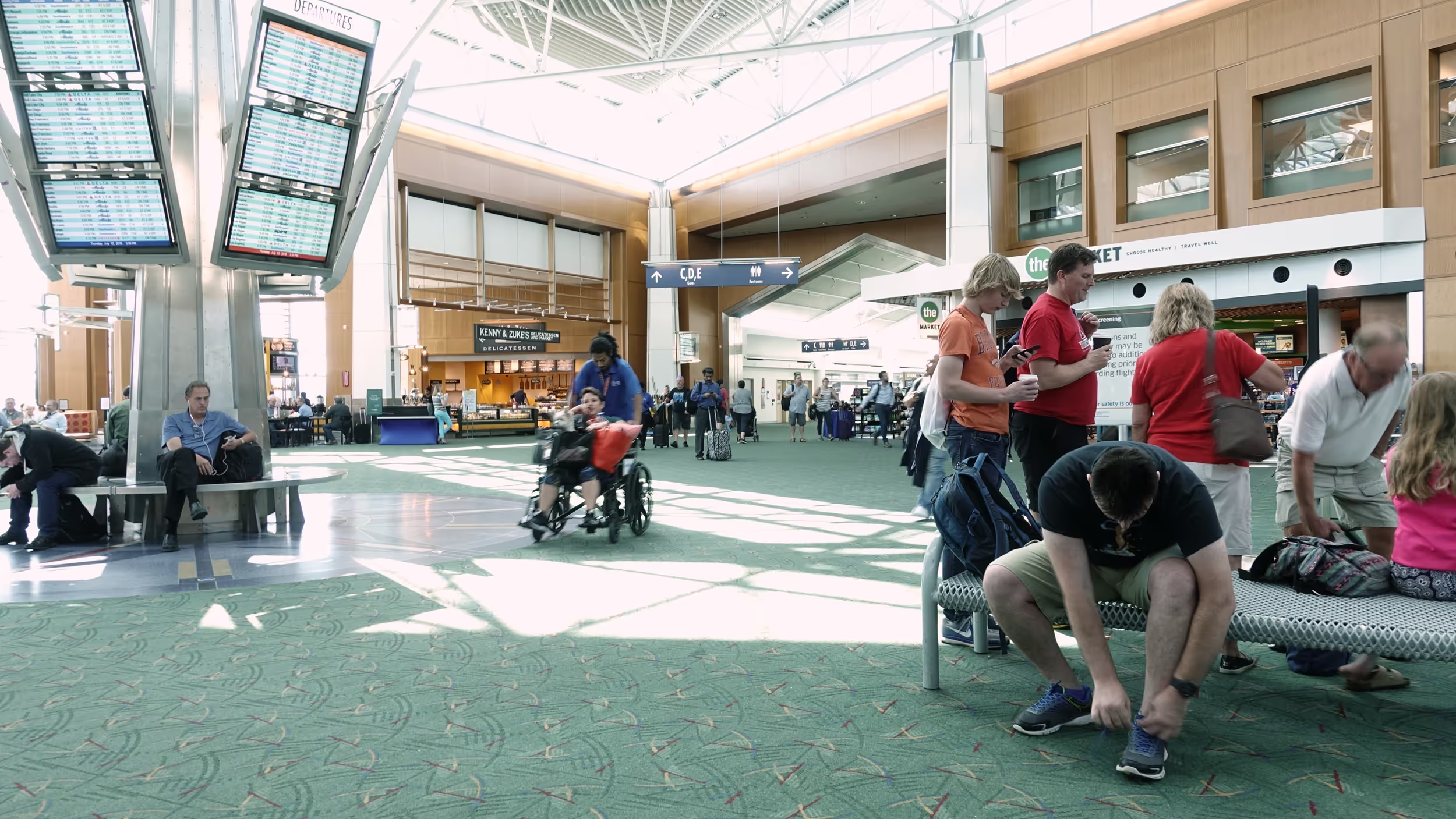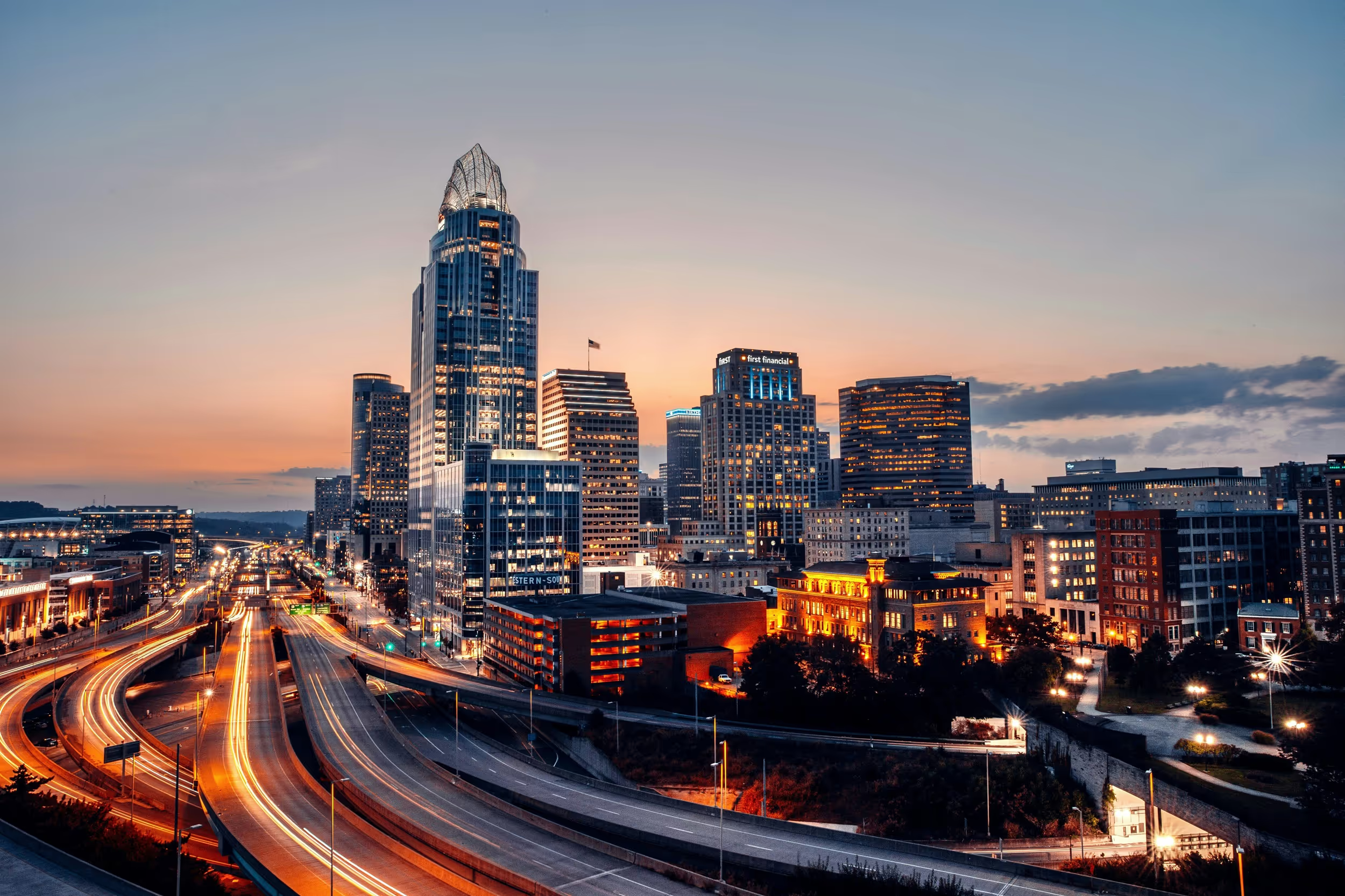Business Travel by the Numbers

Business travel is big business. By 2026, the global business travel market is expected to hit 791.9 billion dollars. That’s a lot of currency being spent worldwide on hotels, flights and other business travel-related expenses.
But that doesn’t tell the whole story.
Where and how are companies spending that money?
How do employees feel about all this travel?
How has the business market changed since the pandemic, and what does the future of this industry look like?
As a hotel booking platform for business travelers, Engine has an abundance of data on corporate travel trends. It’s crucial for us to understand the industry in order to best serve our customers — so we dug into our data to answer the above questions and more.
Table of Contents
1. The Effect of COVID-19 on Business Travel
2. What Are the Most Common Business Travel Destinations?
3. What Amenities Do Business Travelers Look For?
4. Business Travel Expenses: How Much Do We Spend and Where Do We Spend It?
5. Corporate Travel Policies: How Well Do They Work?
6. Do Employees Like to Travel?
The Effect of COVID-19 on Business Travel
It goes without saying that COVID-19 had a massive effect on both domestic U.S. business travel and international business travel. While business travel has rebounded in 2022, it could take several more years to reach pre-pandemic levels again.
Everyone’s eager to see the world get back to normal, but we’re not there yet. According to the US Travel Association, two-thirds of corporate executives say that their company will spend less on business travel in the last half of 2022 than they did for the same period in 2019. However, 73% of corporate executives say business travel is essential.
The Deloitte 2022 Business Travel Trend Outlook reports similar data. They estimate that by the end of 2022, business travel spending will reach a mere 55% of what it was for the same time period in 2019. Both reports anticipate that it will take a few years for business travel to resume to pre-pandemic levels.
The news isn’t all bad for the travel industry, though, and it’s interesting to take a look at how business travel habits are shifting. Business travel spending per trip has actually increased slightly, as has the length of business trips.
The maximum average cost businesses are willing to spend on hotel stays for corporate trips is 18.9% higher per night post-COVID.
And while the frequency of trips has decreased post-COVID, the average length of hotel stays has increased by 5.9% over pre-COVID levels.
What Are the Most Common Business Travel Destinations?
According to Engine’s data, the top 10 states for domestic business travel are:
- California
- Florida
- North Carolina
- Georgia
- Virginia
- Ohio
- Tennessee
- New York
- Pennsylvania
Where travelers are going depends on their industry. Certain parts of the country are hotspots of travel activity for specific industries, and the type of work that business travelers do directly correlates to where they travel most often.
Take a look at which industries these top 10 business travel destinations are attracting:

What Amenities Do Business Travelers Look For?

People who are traveling for work still want to be comfortable and have opportunities to enjoy their downtime away from home. Just like leisure travelers, hotel guests on business trips like to see certain amenities where they’re staying.
Every traveler has their own unique set of preferences, but there are common themes. Some of the most popular amenities are geared toward relaxation and comfort, while others are more convenience-oriented.
The top five amenities requested by Engine members are:
- Free parking
- Complimentary breakfast
- Swimming pool
- Pet-friendly rooms
- Free Wi-Fi
A robust study conducted by JTB Business Travel in 2018 and updated in 2020 reveals some additional common desires among business travelers:
- Extra power outlets
- Meeting and conference rooms
- Healthy dining options
- On-site fitness centers
- Public spaces for relaxation
As hotels prepare for the rebound of business travel, it’s important for them to understand what their customers want most, so they can best cater to their needs and desires. This means a mix of amenities that support collaboration and productivity (like free Wi-Fi and conference rooms), and those that promote relaxation, comfort and healthy travel lifestyles.
Discover: 10 Hotel Amenities Growing in Popularity
Business Travel Expenses: How Much Do We Spend and Where Do We Spend It?
As we said at the beginning, serious money gets spent on business travel. Even during the height of the pandemic, US companies spent $322.42 billion on corporate travel in 2021. But what exactly is that money going toward?
According to Runzheimer, here’s how expenditure breaks down between the four main categories of business travel costs — hotel accommodations, air travel, meals and rental cars:

With hotel accommodations taking the largest piece of the corporate travel spending pie, it’s important to manage your budget by finding the best deals. Engine offers hotel rooms for business travel at up to 60% off.
The cost of business travel varies significantly depending on the destination. And sticking to domestic travel doesn’t necessarily mean saving money — it’s worth noting that four of the world’s top ten most expensive cities are in the United States.
Four of the top ten most expensive cities for business travel are:
- New York City
- Washington D.C.
- San Francisco
- Los Angeles
Outside the US, the most expensive destinations for business travel include:
- Hong Kong
- Geneva, Switzerland
- Zurich, Switzerland
- Paris, France
- Reykjavik, Iceland
- Basel, Switzerland
- Bern, Switzerland
Budgeting for business travel and determining fair per diem rates can be complicated when travel costs can vary so much across the country. That’s why most travel policies are built with different rates depending on the destination of the business trip.
Take a look at how the costs stack up for estimated daily travel rates (determined by ECA International based on the average pricing of a 4-star hotel, plus average costs of transportation and meals) at the top four most expensive domestic destinations:
Estimated Daily Rate for TravelNew York City$799Washington D.C.$621San Francisco$581Los Angeles$578
Travel managers: bookmark our Full Guide to Corporate Travel Expenses.
Corporate Travel Policies: How Well Do They Work?
It’s important for companies to have robust travel policies in place to set clear expectations on how much traveling employees should pay for things like hotels, meals and transportation while they’re away, how they should pay for them and how reimbursement will work.
However, having a policy in place doesn’t guarantee compliance.
These statistics shed some light on what employees think about their company’s travel policy (and how likely they are to comply with it):
- 50% of employees say they do not follow their company’s travel policy
- 62% of business travel bookings comply with company policy
- 77% of employees say their company travel policy is not a top priority when booking a hotel
Many employees indicated that they feel constrained by a travel policy. Particularly when it comes to hotels, workers want to make their own choices regarding where they’ll stay when they’re traveling for business.
That leaves businesses to figure out how to strike a balance between allowing employees the freedom to book their own travel, and managing travel budgets.
Engine offers one solution: businesses can set unique Travel Policies for their travelers (customizable to department or job role) which apply nightly caps to the budget. Travelers can use Engine to browse and book the hotel of their choice while only seeing options that fit their budget.
Another common concern is flexibility, with 48% of respondents desiring the flexibility to book and modify their travel plans. Here, too, Engine can help: by selecting the Flex option at booking, members can cancel at the last minute or even cut a trip short mid-stay.
See also: Engine’s travel program lets you “double dip” on rewards.
Do Employees Like to Travel?

Finally, we wanted to know: how do employees actually feel about traveling for work?
The U.S. Bureau of Transportation reports that more than half of all business trips are taken by employees between the ages of 30 and 49. Millennials, who fall in the age range of approximately 26-41 (as of 2022), account for a large portion of that figure — and as it turns out, millennials love work trips.
Forbes conducted a survey of millennials in the workforce, and here’s what they found:

What is bleisure travel? This term refers to the growing trend of combining business trips with leisure travel. It allows travelers to have some costs covered by their company and then extend the trip for their own enjoyment. In the business travel industry, it accounts for approximately 10% of all trips.
There are several reasons why employees love to turn a work trip into a bleisure trip:
- Extending the trip for leisure time makes the trip more fun
- It justifies bringing a loved one along on the trip
- It’s a way to conserve vacation time
- It’s an opportunity to travel to places they otherwise wouldn’t visit
In the wake of the pandemic when most people were unable to travel, it’s unsurprising that bleisure travel is currently so popular. Industry experts expect that the bleisure travel trend will continue to increase in the years to come.
Related: Engine as an Employee Benefit? Here’s How it Works.
Conclusion
Many aspects of the ways we live and work have been significantly altered by the pandemic — but it’s clear that business travel is here to stay. Although it may take several years to fully rebound, its enduring popularity is a strong indicator that it will remain prevalent long term.
That doesn’t mean that it doesn’t come without its pain points, like the complications of managing a travel program and the difficulty of staying within budget. Engine is here to help. Our exclusive platform provides members with deals up to 60% off public travel sites, plus a range of tools that make booking and managing travel so much easier for the whole team. Best of all, it’s totally free to join and use. Learn more and become a member today!








.avif)














.avif)


.jpg)









![What is an OBT? [+ Why They Matter]](https://cdn.prod.website-files.com/66a41388b1be9ba182f1e80c/66f97c4190ac5e26bea90c05_66a41388b1be9ba182f1efc0_online-booking-tool.avif)



